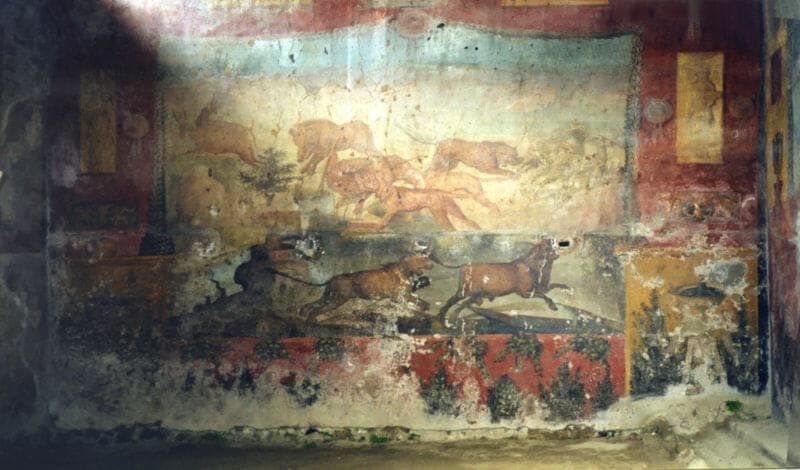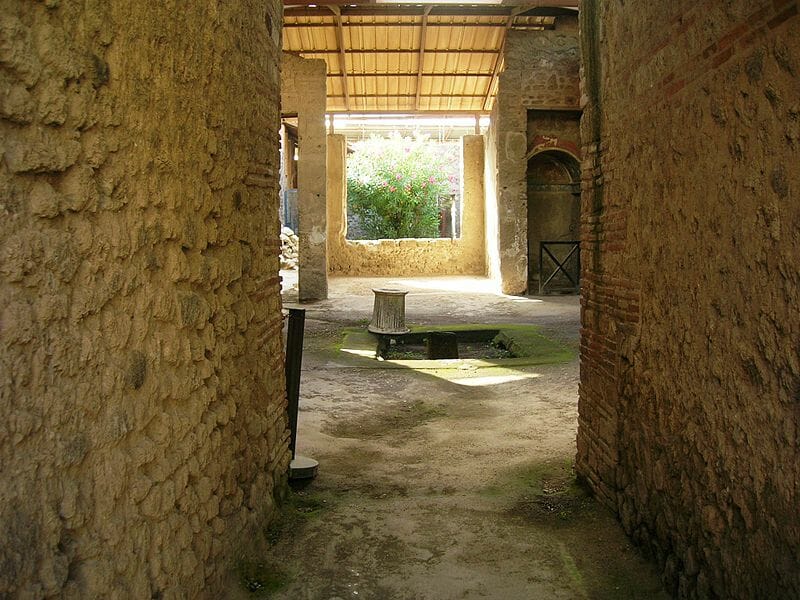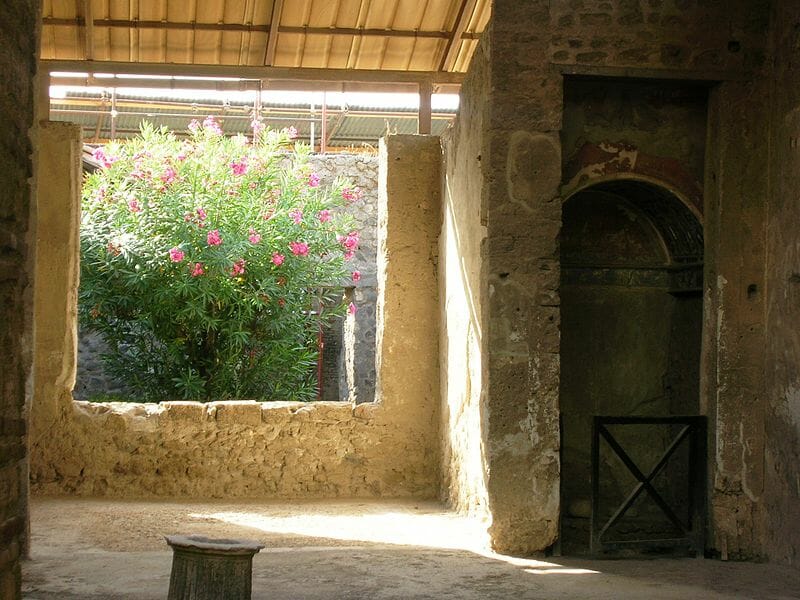Imagine this, live at Pompeii: the bold luxury in the Casa della Caccia, with its interiors decorated with frescoes and sumptuous sky-blue panels; the elegant decorations of the House of Apollo with its colorful images of the god; the ancient home of the Larario di Achille, with its frames in bas-relief telling the story of the Trojan War. Imagine also the extraordinary Thermopolium of Vetuzio Placido to understand what high-level fast food was like two thousand years ago. Pompeii now offers ten new houses to visit, some of which have never before been opened to the public.

This makes the idea of taking a tour of the archaeological park to better understand how life was organized in Pompeii at the time of its destruction, even for those who have already visited in the past, even more interesting.

That said, Road to Italy highly recommends you visit:
The Thermopolium of Vetutius Placidus, which is essentially a snack bar. This type of place is widespread in Pompeii (there are 89 altogether) but the one on the property of the rich Vetuzio is really worth a visit. Near the counter and well visible is the altar dedicated to Mercury (god of commerce) and Dionysus (god of wine). The small shop offered an indoor room to sit and eat the warm meal. From the shop was direct access to the owner’s house, with a beautiful lobby and a garden.

Very peculiar is the House of the Ancient Hunt, which had to have been recently renovated when it was buried by ash during the dreadful night of 79 AD. On the back wall of the garden you can still see a great scene depicting a hunt for wild beasts, while the interior is magnificent, from the study overlooking the atrium and garden, with a plinth that mimics marble tiling and paintings that refer to Nilotic landscapes and cupids on the hunt.

Also interesting is the House of Apollo, which takes its name from the god depicted throughout its interior, as well as the House of Larario di Achille, which had been damaged by an earthquake and was still under renovation at the time of the eruption of Vesuvius. The latter house owes its name to the figures, in relief and painted on a blue background, showing the last events of the Trojan War.

Photos by Mentnafunangann, Marcus Cyron, AlMare, Mentnafunangann (4&5) from Wikimedia Creative Commons


